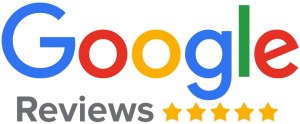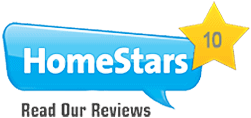No matter how many times you have relocated, knowing how to pack for a move is not an intuitive skill.
Knowing how to start packing for a move, how early to start packing for a move, and even particulars about how to pack art and how to pack dishes for a move will all come in handy unless you have hired the type of moving company that does professional packing for a move.
If you have chosen Let’s Get Moving, we’ll do the heavy lifting (and the packing and unpacking) for you.
But that still leaves plenty of work for you, and having the right moving tips can make all the difference in the long run.
Moving supplies you’ll need to pack for a move
When packing for a move, the first thing to do is gather the supplies you’ll need to execute a smooth move. We have compiled a list of moving supplies we use regularly for our moves, and so should you.
-
Moving Boxes
Moving boxes is the biggest priority when it comes to packing, and having a variety of sizes for items in your home will make moving much more effortless. There are special boxes for moving small and large items, your wardrobe, and even your important files.
-
Packing tape
Not all tape is created equal, and not all are appropriate for sealing boxes for moving. Strong adhesive tape and a “tape gun” to seal boxes properly will help prevent boxes from opening during travel.
-
Permanent marker
Use a permanent marker or sticker labels to label moving boxes so you can sort them by room and easily prioritize unpacking. Labeling is crucial for organization during moving and unpacking because it helps communicate important information to your moving team.
-
Plastic bags
Use all those plastic bags and totes for smaller items such as silverware and non-perishable food items.
-
Packing paper and packing peanuts
Purchase packing paper and peanuts to provide a cushion for your fragile items. After moving, you may reuse these materials for storing items, like holiday decorations and fine china between uses. In a pinch, the newspaper can be an alternative to packing paper.
-
Blankets, linens and towels
Use everyday blankets for additional padding for breakable items like glass, wood and porcelain.
-
Bubble wrap
Bubble wrap will help cushion fragile items while moving; however, you must still handle items with care. Secure bubble wraps around items with packing tape, and do not stack heavy items on top of fragile ones, even when using bubble wrap.
-
Dollies and handcarts
Use a dolly or handcart to lift and transfer heavy items and boxes from your home onto the moving truck and into your new location.
Moving days are long, and this tool will lessen the chance of physical injury from lifting and carrying many heavy boxes.
How to pack each room for a move
In our experience, the most challenging rooms to pack are the bedroom and kitchen since they contain items you’ll need to use during packing.
That said, we know that all of the rooms in a home will present unique challenges, and that’s why we have created this set of checklists you can use to pack for a move efficiently.
Tips for packing a kitchen for a move
Properly packing a kitchen is vital to a stress-free move. Here are essential tips to securely and efficiently pack your kitchen items, ensuring everything arrives at your new home in perfect condition.
How to pack pots and pans
Put smaller pans inside of larger ones to maximize your space. Anything with glass or ceramic in packing paper and secure the edges with packing tape.
Use packing peanuts to fill the space, especially with fragile kitchen items.
How to pack kitchen appliances
Pack small kitchen appliances like mixers, coffee makers, toasters and air fryers in the manufacturer’s box if you still have them.
Alternatively, wrap each appliance in bubble wrap and secure the edges of the material with packing tape. Place each item in its own box and use packing peanuts to fill the space.
How to pack stemware and crystal
Wrap each item separately in packing paper before using a foam pouch or bubble wrap to add additional cushioning around the item. Place in the box and use packing peanuts to fill the space.
How to pack glassware and dishes
Wrap all breakable glassware like you would a gift using packing paper to surround the item and tape to secure the edges.
How to pack flatware
For convenience in unpacking, leave flatware in the drawer organizer and wrap the entire thing in bubble wrap, placing the tray into a larger box.
Do the same for knives stored in a butcher block. For flatware with ceramic handles, treat these items like you would fragile dishware and wrap them individually.
How to pack pantry items (non-perishable foods)
Pack your boxed, bagged and canned food in a way that prevents spills. Seal previously opened containers with tape or place them in a plastic or reusable tote bag.
Pack cans in a single layer at the bottom of a box and place lighter items, such as bags of rice, pasta or cereals, on top.
Tips for packing a bathroom for a move
Streamline your moving process with these practical tips for efficiently packing a bathroom before moving. We want to help you ensure all your essentials are organized and protected for the journey to your new home.
How to pack shampoo and conditioner
Place bottles (such as shampoo and conditioner) in sealable plastic bags to prevent spillage during transport.
How to pack breakable bathroom items
Line boxes full of breakables, such as mirrors, dispensers and glass containers with towels. Since all these items are bathroom-bound, you can minimize the need to use packing paper and bubble wrap to cushion each item.
How to pack bathroom cleaning items
Clean and wrap plungers and toilet brushes in plastic bags to keep your move as hygienic as possible. Pack cleaning products in the same box when feasible.
How to pack towels
Use heavy-duty boxes to pack all of your unused towels and linens. Fill the box to the top to prevent the box from buckling when stacking boxes on top.
How to pack medications and supplements
Keep your prescription and over-the-counter medications and supplements safe during your relocation by storing them together at room temperature.
Many medications are sensitive to hot or cold temperatures, and you may need easy access to these items before, during and after your move.
Put the bin or bag with your medications and other medical devices, such as inhalers or CPAP machines, into the car only as you leave, and remove these items from the vehicle as soon as you arrive.
Tips for packing a living room or bedroom for a move
Make your move hassle-free with these expert strategies for packing a living room, designed to safeguard your furniture, electronics, and decor.
Protect furniture
Use linens, blankets and towels when possible to protect the exposed corners of items like coffee tables, mirrors, televisions, and chairs.
Protect art, mirrors, and TVs
Purchase enough art and mirror boxes to cover your fragile items, and use additional protective cushioning when possible.
Protect your mattress during a move
Covering a mattress from dirt, dust, and moisture is essential before moving. Having a nice, clean bed after a long relocation day is priceless. Invest in a simple mattress protection bag that works for you.
Tips for packing hazardous items from a basement, garage or attic for a move
Navigate the complexities of moving hazardous items from your basement, garage, or attic with these crucial tips, ensuring safe and compliant packing practices for a worry-free relocation.
How to move hazardous materials safely
Planning and preparing for your move is the perfect time to purge any materials that could be deemed hazardous, flammable, explosive, toxic and unsanitary or pose a potential health and safety risk during moving.
Unlike freight transport where providers have the proper licensing, professional movers cannot transport dangerous items like fuel or oil. For example, you can only load some recreational toys or gas-powered lawnmowers into the moving truck by draining the fuel first.
Do you need clarification on some items you are moving from your garage, toolshed, basement, or attic? Check with your movers regarding such items regarding hazardous materials and prepare to move these yourself or dispose of them correctly according to your local laws.
Packing for a move efficiently: Additional Tips
Maximize efficiency and minimize stress with these additional packing tips, tailored to help you organize, protect, and streamline the process for a smoother, more effective move.
-
Start packing early and do a little each day
We suggest starting to pack up to 6 months beforehand, and we have created a helpful moving checklist that includes the ideal times to begin packing specific items.
Commit to packing a few boxes per day. Packing room by room is always an excellent idea, as this will help you stay organized and neat throughout the process.
-
Create a packing area in your home
Choose an area of the home that is large enough to handle your most oversized boxes.
A solid table with a protective covering is a good option if you have it. An open floor will also provide the kind of space you will need. Have your pens, markers, tape, and scissors handy.
Put down a fabric drop cloth, old blanket or paper covering over the table so you don’t scuff and scratch it.
-
Label everything
Labels are among the most significant moving tips because they help keep you organized while packing and unpacking and serve as a communication tool between you, the person moving, and anyone else involved.
Mark each box with the room to which it belongs, a box number, and add a “fragile” label if the contents contain glass, pottery, or other breakable materials.
Keep an inventory of how many boxes you have and which room they go to once relocated to the new home.
This way, you will know where each box must go in your new home. It will allow for faster and more organized unpacking after the move.
-
Keep moving boxes under 50 lbs (22.6 kgs)
Always pack the heavier items at the bottom of each box with the lighter ones closer to the top. Also, remember that the heavier the item you are packing, the smaller the box should be.
-
Refrain from filling your boxes
Your boxes should each contain plenty of filling material to keep all of your items safe, especially breakable ones while maintaining the boxes light enough to pack safely.
Line the bottom of boxes carrying fragile items with padding material, bubble wrap, or linens, and always leave a little space at the top of the box.
-
Double check box bottoms
Avoid the disappointment of watching items fall through the bottom of a poorly secured box.
Learning how to pack for a move is essential to taking good care of your items.
Make sure the boxes are facing upright, and even take the time to tape the bottoms to ensure even your most breakable items are kept safe during a long-distance move.
-
Minimize the amount of perishable food you move
A local move can allow you to move some perishable foods if, when you arrive, a working refrigerator and freezer are available and plugged in at your destination.
However, you will want to ensure it’s one of the last items you pack and the first to unpack.
Refrain from burying your perishable foods under items that will take longer to unpack, or you may end up with spoiled food and a big mess.
-
Use the suitcases you already have
Suitcases can be ideal “moving boxes” for shoes or hats. Reduce the risk of squishing your belongings by keeping similar items together and not burying luggage made from soft materials, like nylon or leather, under boxes of heavy items.
Conclusion
As moving experts, we won’t sugarcoat it: moving is stressful, and no two moves are exactly alike.
One of the best ways to ensure an easy move with minimal stress is to hire a moving company to do the hard work for you, including packing each room correctly, taking good care of unique items, and unpacking at your new location.
If this sounds like a winning proposition, we are here to accept your call. Let’s start with a free estimate of your move.






















